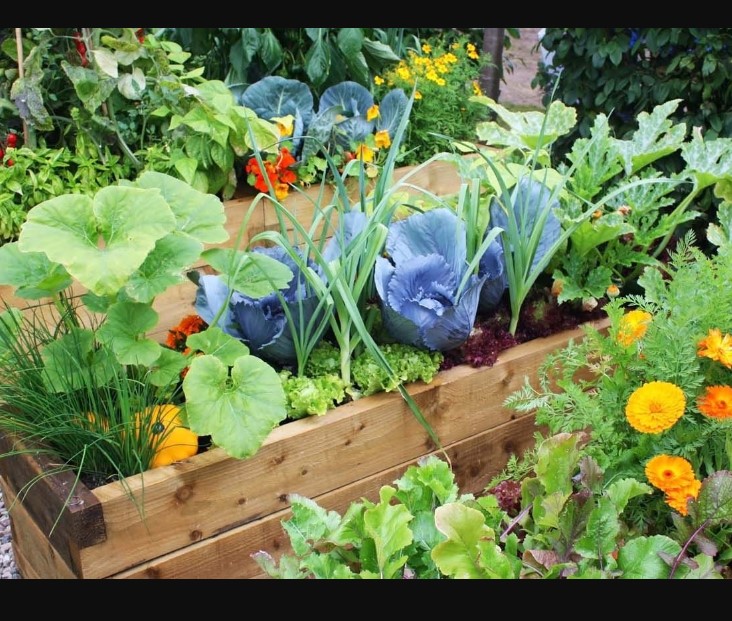Gardening isn’t just about planting seeds and waiting for them to grow; it’s an art and science combined, where every element plays a crucial role. One such element is companion planting, which involves strategically placing plants next to each other to maximize their growth, deter pests, and enhance overall garden health. This comprehensive guide delves into companion planting, exploring its principles and benefits and providing practical tips for creating harmonious plant communities in your garden.
Understanding Companion Planting:
Companion planting is an age-old agricultural technique harnessing symbiotic relationships between different plant species. Gardeners can create a more resilient and productive garden ecosystem by carefully selecting plants that support each other’s growth and repel common pests.
The key principles of companion planting revolve around diversity, compatibility, and synergy. Diversity ensures that various plant species coexist, reducing the risk of pest outbreaks and nutrient depletion. Compatibility involves selecting plants with complementary growth habits and environmental preferences, while synergy refers to the mutually beneficial interactions between plants.
Benefits of Companion Planting:
Companion planting benefits range from improved soil health to increased crop yields and pest control. One primary advantage is pest management, where certain plants release natural compounds or emit odors that repel pests, effectively reducing the need for chemical pesticides.
Furthermore, companion planting promotes biodiversity, attracting beneficial insects such as pollinators and predatory insects that prey on pests, thus creating a balanced ecosystem. Additionally, certain plant combinations can enhance soil fertility by fixing nitrogen or improving soil structure, leading to healthier plants and increased yields.
Practical Tips for Companion Planting:
Consider plant compatibility, spacing, and timing when planning your companion planting scheme. Researching each plant species’ specific requirements and characteristics will help you make informed decisions and maximize the benefits of companion planting.
Here are some practical tips to guide you:
- Identify plant relationships: Familiarize yourself with the principles of companion planting and learn about the beneficial and detrimental relationships between different plant species. Keep a list of compatible and incompatible plants to refer to when planning your garden layout.
- Plan your garden layout: Design your garden layout based on plant compatibility, growth habits, and space requirements. Group together plants that support each other’s growth and avoid planting incompatible species next to each other.
- Utilize companion planting techniques: Experiment with intercropping, where different plant species are grown together in the same bed, or border planting, where companion plants create a protective barrier around vulnerable crops.
- Rotate crops: Implement crop rotation to prevent soil depletion and reduce the buildup of pests and diseases. Rotate crops annually to ensure optimal soil health and productivity.
- Monitor and adapt: Regularly monitor your garden for signs of pests, diseases, or nutrient deficiencies, and adjust your companion planting scheme accordingly. Be open to experimentation and learn from your observations to refine your approach.
Examples of Companion Planting Combinations:
- Three Sisters Garden: A traditional Native American planting technique that combines corn, beans, and squash. The corn supports the beans in climbing, while the beans fix nitrogen in the soil, benefiting the corn and squash. The squash acts as a living mulch, suppressing weeds and conserving soil moisture.
- Marigolds and tomatoes: Marigolds emit a strong odor that repels nematodes that harm tomatoes. Planting marigolds around tomato plants can help deter nematodes and reduce the risk of root damage.
- Basil and tomatoes: Basil repels aphids, spider mites, and other common tomato pests while enhancing the flavor of tomatoes when grown nearby. Planting basil alongside tomatoes can improve overall plant health and flavor.
Conclusion:
Companion planting offers a holistic approach to gardening that promotes biodiversity, pest control, and soil health. By harnessing the natural relationships between plant species, gardeners can create harmonious ecosystems that thrive without harmful chemicals or intensive maintenance. Whether you’re a seasoned gardener or just starting, incorporating companion planting into your garden can unlock a world of benefits and enhance the beauty and productivity of your outdoor space. So, roll up your sleeves, dig in the dirt, and let the magic of companion planting transform your garden into a vibrant oasis of life and abundance.

